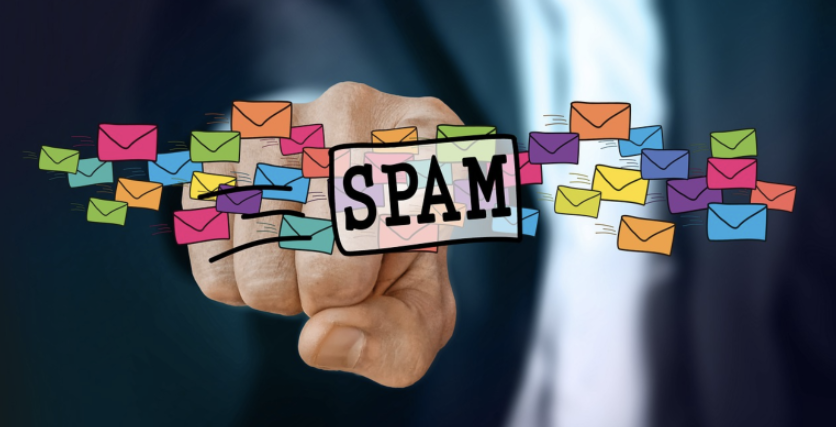Invalid and inactive addresses in your mailing list can be people, email bots, or spam traps. They can lower your engagement rates and eventually have you blacklisted for spammy behavior if you keep on sending them campaigns. That affects your campaign deliverability, and that’s why you need to weed them out.
Email hygiene is the practice of keeping your email list clean through the process of removing these wrong addresses. There are various ways to do it. It’s also advisable to prevent acquiring incorrect addresses and prevent active users from going cold in the first place. Here’s what you need to do.
1. Validate your mailing list before executing a campaign
People make mistakes. Even when entering their email address to join your mailing list. They probably have lousy eyesight or weren’t paying attention to the signup process, which could lead to bad deliverability rates. However, users cannot correct their misspellings, and that job rests in your hands.
So check your mailing list and look for spelling errors before sending your campaigns. There’s nothing you can do much about name spelling mistakes, but you can fix special characters and domain spellings. For example, you can fix [email protected] or johndoe29@gmailcom into [email protected].
2. Consider segmenting before deleting
If you find inactive emails in your mailing lists despite correct address inputs, it’s probably because these users have lost interest in your business. It could also be that your subscribers are just busy or on hiatus.
You could put these inactive users into a different list segment and re-engage these inactive users later on. If they still fail to respond to your re-engagement emails multiple times, remove them from your mailing list. Gaining new subscribers to your mailing list is hard. You should remember to avoid removing inactive users immediately after inactivity.
3. Do not buy or share email lists
Buying or selling email lists isn’t illegal. Nor is sending emails to the addresses in the list. Even your email address can be sold without you knowing about it. But you should remember that it’s the addresses in the purchased lists you should be wary about. These lists have bots and spam traps. Some of the human users are inactive, and the active ones will be surprised to receive your campaigns.
All these addresses have two things in common: They ruin your engagement rates and can get you blacklisted as a spammer. You’ll have to think thrice before buying mailing lists. When it comes to sharing mailing lists, the one you’ve shared will also share the list with another marketer, and the cycle goes on.
The users in your list will then get bombarded with unsolicited emails from other marketers and cause them to deactivate their addresses. You’ll lose your customers because those deactivated addresses will eventually have to be removed from your list.
4. Avoid over-scrubbing
There is one bad method to keep your mailing list clean, and that’s over-scrubbing through suppression lists. Suppression lists are mostly listed segmentation of users from 3rd party marketers that have unsubscribed or have opted out of an email marketer’s future campaigns.
Let’s say that you have an email marketer friend and you want to scrub your mailing list. You’ll ask your friend for their suppression list to determine if these addresses are also on your mailing list. You’ll use your friend’s suppression list as a reference to removing some users from your list.
What if the addresses from your suppression list found your friend’s content boring but yours interesting? Are you going to remove customers who are the lifeblood of your business? Of course not.
The bad thing about 3rd party suppression lists is that they can make you remove actively engaged customers. This is also a critical issue because you’ll want to know what caused your customers’ disinterest to prevent future disinterests as an effective email marketer. And over scrubbing prevents you from finding out the truth.
5. Use a double opt-in with a smarter honeypot trap
Spambots and spam traps will click and enter anything just to appear like a real person. Most can get past a simple double opt-in system, but they cannot identify a trap. When they fall into the honeypot trap, they’ll reveal their true nature, and you can block them from joining your mailing list or put them in your specialized suppression list.
Bots nowadays are highly advanced and can get past CAPTCHAs and reCAPTCHAs. It’s not about keeping them off your mailing list by adding a filter anymore. It’s about catching them red-handed and marking them.
6. Provide an opt-out process
Many businesses don’t provide an opt-out process to their subscribers just to keep them on their list. This is a bad marketing practice, and it often ends badly. The businesses that don’t provide an opt-out process usually get blacklisted by the internet and email service providers (ISPs and ESPs) for being spammy.
Don’t follow this model. If your customers want to stop receiving campaigns from you, make it easy for them to do so. But don’t forget to ask them why they wanted to leave in the first place. This will teach you how to improve your performance as an email marketer.
Final Thoughts
Sending campaigns to the wrong email addresses will lead to low engagement rates, and low engagement rates will lead to you getting blacklisted. So trap the bots, provide an easy way out to disinterested subscribers, grow your mailing list naturally, re-engage your inactive customers, and prevent future disinterest by sending your campaigns on schedule.
Is a freelance tech writer based in the East Continent, is quite fascinated by modern-day gadgets, smartphones, and all the hype and buzz about modern technology on the Internet. Besides this a part-time photographer and love to travel and explore. Follow me on. Twitter, Facebook Or Simply Contact Here. Or Email: [email protected]







Leave a Reply